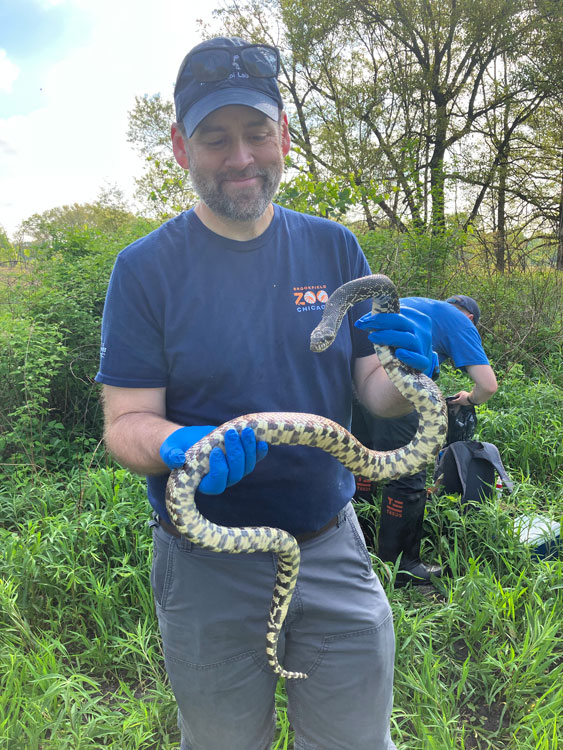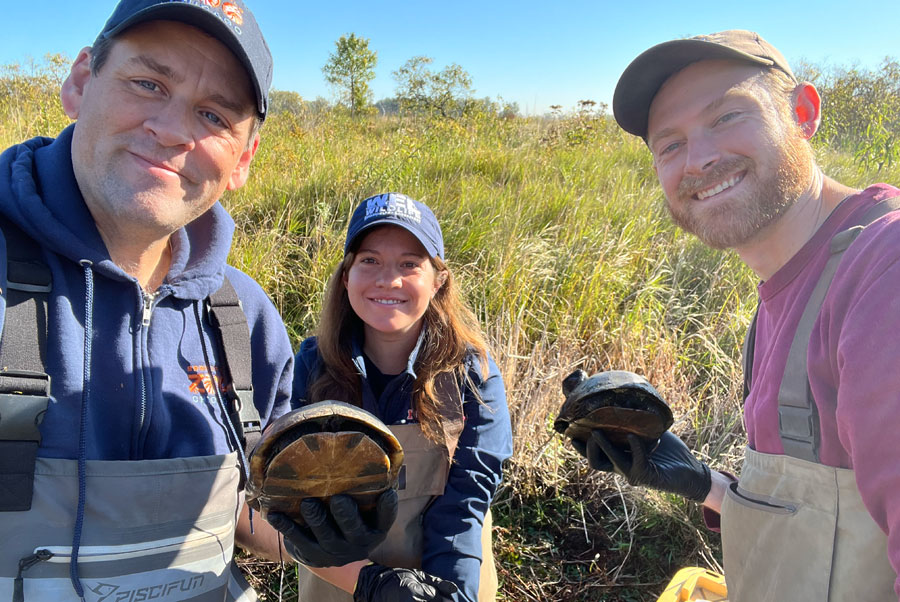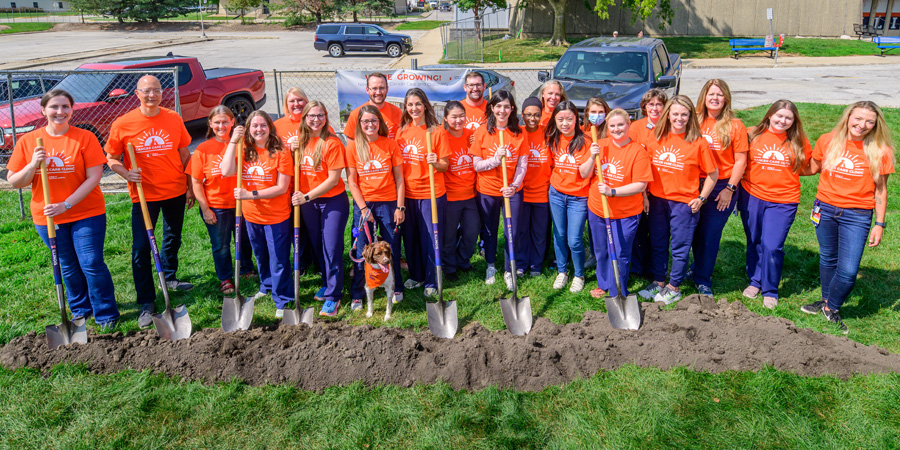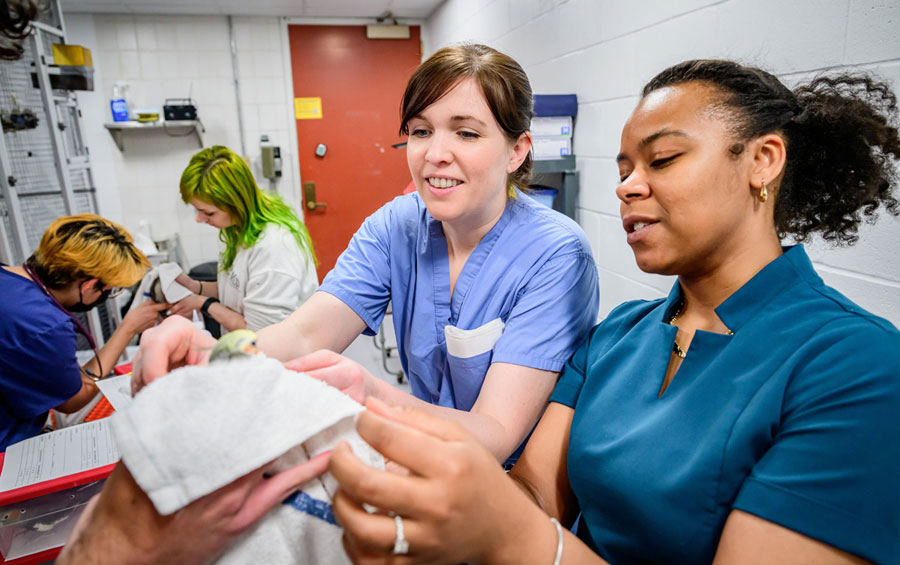This message will appear in the Chicago Veterinary Medical Association Bulletin.
Many of you who attended our college since 2009 may know—or have even conducted fieldwork with—Dr. Matt Allender. Dr. Allender has built a singular career in wildlife epidemiology, beginning with his efforts to “save the world, one box turtle at a time.”
His annual eastern box turtle health assessments in the Midwest span 18 years, making it the largest health study of box turtles in the world. His fieldwork has expanded over time to include ornate box turtles and aquatic turtle species. A new study in Cook County will look at the management of health and disease in red-eared sliders, an invasive species that poses risks to all turtles, says Dr. Allender.
But Dr. Allender’s impact and interests encompass much, much more than turtles, even as turtles remain the centerpiece of his lab’s investigations.

‘It’s All Interconnected’
With joint appointments at our college and at Brookfield Zoo Chicago, today Dr. Allender spends as much or more time in Cook County as in Champaign County. At the University of Illinois he is a clinical associate professor, director of the Wildlife Epidemiology Laboratory, section head in the Veterinary Diagnostic Laboratory, and an institute affiliate at the Natural History Survey. For Brookfield Zoo Chicago, he is director of conservation medicine and science.
He wears many hats—literally. He swaps out his signature ball caps featuring zoo or Illinois branding depending on the event.
“It’s difficult to separate the various aspects of what I do and assign parts to one institution or another,” he says. “It’s all interconnected.”
For our CVMA readers, he considers his work “conservation in your backyard—surveillance of diseases of concern in mammals, birds, invertebrates, and, of course, reptiles.”
First-Ever Free-Ranging Wildlife ACZM Residency
In 2022 Dr. Allender spearheaded the first-ever residency program approved by the American College of Zoological Medicine focused on health management in free-ranging wildlife in the U.S. The residency is offered through a collaboration of the College of Veterinary Medicine, Forest Preserves of Cook County, and Brookfield Zoo Chicago. Last year, this successful program added another resident.
“Our first resident, Dr. John Winter, will complete his program this summer,” Dr. Allender says, “and our second resident, Dr. Eliza Baker, started last summer. So, we’ll toggle between years with both a first- and third-year resident and years with only a second-year resident.”
He proudly rattles off the number of wildlife health assessments completed through the residency program to date: 1,305 reptiles (turtles and snakes); 675 birds; 167 freshwater mussels; 130 mammals; and 20 fish.
After completing his residency, Dr. Winter will continue working with Dr. Allender to pursue a Ph.D. from the University of Illinois Program in Ecology, Evolution, and Conservation Biology.
Education, Service, and Discovery
Public and professional education have always loomed large in Dr. Allender’s activities. This summer, 10 veterinary students work as paid fellows in his Wildlife Epidemiology Lab. Six of them conduct fieldwork in Cook, Lake, or Kane counties, while four focus on central Illinois.
All fellows in the lab work on a primary project that exposes them to study design and execution and requires them to draft a manuscript. The lab typically produces more than 20 manuscripts and even more national or international presentations every year.
“Our efforts address scientific needs and train the next generation of professionals by immersing them in real-world scenarios,” says Dr. Allender.
He also makes diagnostic services available to veterinary practitioners who see companion zoological species as patients.
“We have new diagnostic tests for carnivores, birds, and reptiles,” he says. “We are happy to receive samples from non-traditional species patients through the Veterinary Diagnostic Laboratory.”
Recently as part of the routine surveillance conducted through his lab, the fungal disease Paranannizziopsis was detected for the first time of in Illinois snakes. Discoveries like this trigger a series of actions, from developing assays to implementing prevention measures, that ultimately benefit not only wildlife but human health.
“Urban and suburban landscapes have undergone tremendous changes since native species evolved,” he says. “These changes have subsequent health impacts on wildlife and on the ecosystem that both wildlife and humans use.”
We can be thankful Dr. Allender and the many experts he has trained are in the field and in the lab, saving the world.




